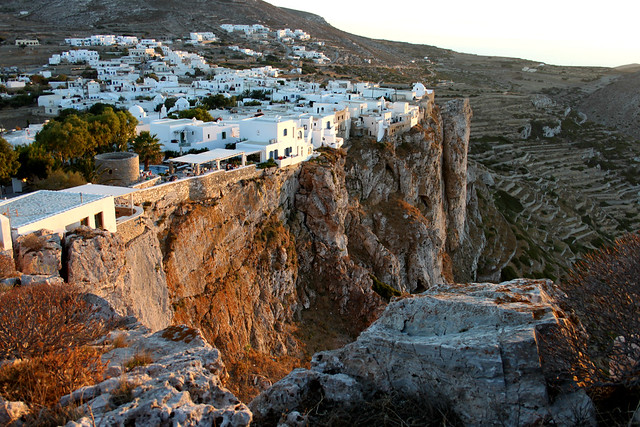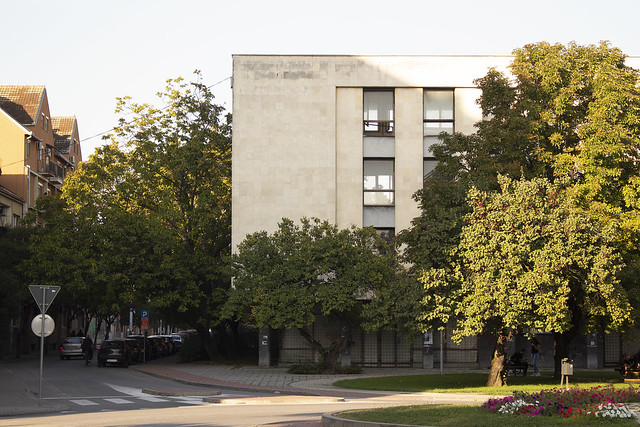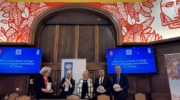Europa Nostra and EIB Institute announce heritage sites in Europe shortlisted for the 7 Most Endangered Programme 2024
Press releases (in 10 languages) and photos can be downloaded at the bottom of this webpage
The monuments and heritage sites in Europe shortlisted for this year’s edition of the 7 Most Endangered Programme were announced today by Europa Nostra, the European Voice of Civil Society Committed to Cultural and Natural Heritage, and the European Investment Bank (EIB) Institute.
These are the 11 most endangered monuments and heritage sites in Europe shortlisted for 2024:
- Archaeological Site of Muret e Portës, Durrës, ALBANIA
- Amberd Historical and Cultural Reserve, ARMENIA
- Palais du Midi, Brussels, BELGIUM
- Working-class Housing (courées) in Roubaix-Tourcoing, FRANCE
- Cycladic Islands, notably Sifnos, Serifos and Folegandros, GREECE
- Church of San Pietro in Gessate, Milan, ITALY
- Synagogue of Siena, ITALY
- Palace in Sztynort, northern Masuria, POLAND
- Home of the Yugoslav People’s Army in Šabac, SERBIA
- Greek Orthodox Church of St. Georgios, Altınözü / Hatay province, TÜRKIYE
- Iron Gate of Antioch, Antakya / Hatay province, TÜRKIYE
The Executive President of Europa Nostra, Prof. Dr. Hermann Parzinger, stated: “The selected heritage sites are threatened by demolition, unsuitable development, the devastating impact of natural disasters, neglect or lack of funding. By publishing this shortlist, we wish to convey a strong message of solidarity and support to the activists and local communities who are deeply committed to saving these sites. Europe’s heritage must be preserved not only as a testimony of our shared past, but also as a catalyst for a sustainable, cohesive and peaceful future.”
The Dean of the European Investment Bank Institute, Shiva Dustdar, said: “Cultural heritage is a key resource for European identity, attractiveness and economic growth. This shortlist reminds us how fragile it is and how much we take it for granted. Together with our long-time partner Europa Nostra, the Institute amplifies the efforts of local communities throughout Europe who know that saving cultural heritage sites will help them tackle other pressing challenges. We hope to see the sites restored and preserved for generations to come.”
The above-mentioned endangered heritage sites were shortlisted by an international Advisory Panel, comprising experts in history, archaeology, architecture, conservation, project analysis and finance. Nominations for the 7 Most Endangered Programme 2024 were put forward by member organisations, associate organisations or individual members of Europa Nostra, as well as by members of the European Heritage Alliance.
The selection was made on the basis of the outstanding heritage significance and cultural value of each of the sites, as well as the serious danger that they are facing today. The level of engagement of local communities and the commitment of public and private stakeholders to saving these sites were considered crucial added values. Another selection criterion was the potential of these sites to act as a catalyst for sustainable socio-economic development.
The final list of 7 Most Endangered heritage sites in Europe for 2024 will be unveiled in April.
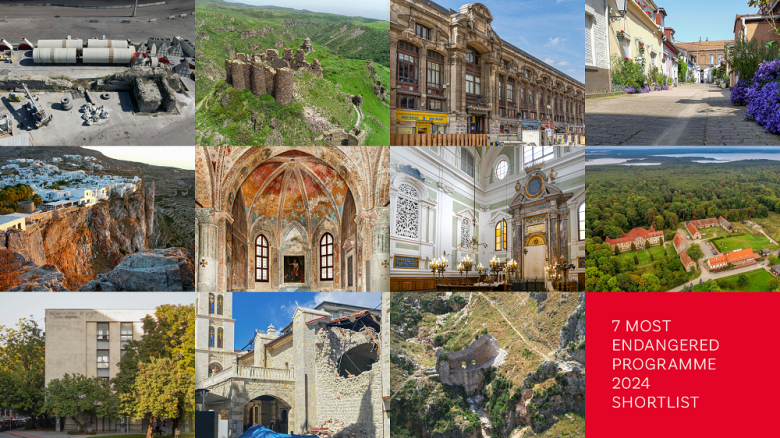
11 European heritage sites shortlisted for
the 7 Most Endangered Programme 2024
(listed in alphabetical order of the country where they are located)
1. Archaeological Site of Muret e Portës, Durrës, ALBANIA
Seated upon the ancient street of Egnatia, the archaeological site of Muret e Portës showcases remains from the Archaic, Roman, and Byzantine periods. Yet the location is very exposed, in the middle of a loading and unloading dock of the port of Durrës. Despite the designated protected status of the site, a construction project aimed at developing a modern port has been underway.
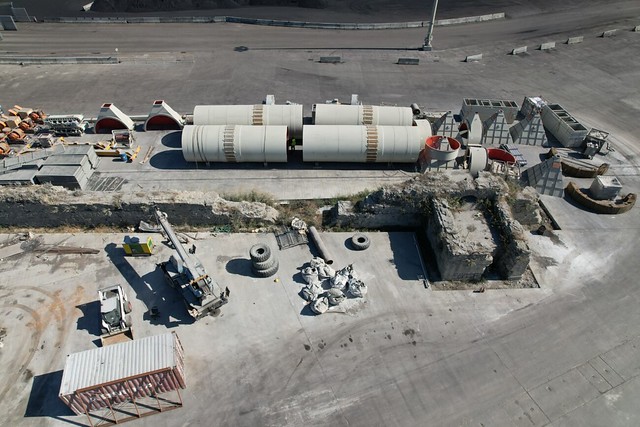
According to the research carried out by the archaeologist Apollon Baçe and reported by Amfora Media in December 2023, the “MBM Port” company has destroyed 78 metres of the 140-metre long defensive western wall. The tower and the 62-metre long eastern wall urgently need to be protected.
Nominated by an individual member of Europa Nostra from Albania with the support of the Amfora Centre
2. Amberd Historical and Cultural Reserve, ARMENIA
Located on the southern slope of Mount Aragats, Amberd encompasses a defensive structure, a castle, a church, a bath house and other ancillary buildings, showcasing intricate stonework and design of European significance. Abandoned for centuries, the site saw a revival in the 20th century with archaeological excavations and the restoration of the church, the bath house and the gates. Nevertheless, the 7th-century castle persists in gradually decaying.
Vegetation further exacerbates the monument’s deterioration as its roots burrow deeper. Coupled with occasional tremors, there is a heightened risk of structural collapse, causing potential risk to visitors.
Nominated by the Ministry of Education, Science, Culture and Sport of the Republic of Armenia
3. Palais du Midi, Brussels, BELGIUM
Designed by the architect Wynand Janssens in 1875 and inaugurated in 1880, the Palais du Midi stands as an emblem of eclectic architecture. The building, showcasing a 175-metre-long facade, is in an excellent state of conservation. It currently houses many public functions and collective facilities, including a high school, a sports complex, and around 30 shops. It constitutes a major social and cultural hub for local residents and brings in others from the wider region.
The imminent construction of a new metro line poses a significant threat to the Palais du Midi, as development plans foresee its partial demolition which would retain only the facades of the building.
Nominated by ARAU – L’Atelier de Recherche et d’Action Urbaines with Inter-Environnement Bruxelles and BRAL
4. Working-class Housing (courées) in Roubaix-Tourcoing, FRANCE
In the 19th century, the cities of Roubaix and Tourcoing formed, together with the nearby city of Lille, the vibrant heart of France’s textile industry. These towns housed workers in a unique form of subsistence housing known as courées. These narrow cul-de-sacs featured small houses squeezed in behind existing terraced houses, creating a distinct morphology reflective of working-class life.
Despite the poor living conditions, this architectural form persisted well into the 20th century. Hygienic concerns and later the recession in the textile industry led to the demolition of most courées. Only a handful remain, still inhabited and, to some extent, in good condition. However, the current municipal stance, favouring demolition within a new urban renovation plan, poses a significant threat.
Nominated by the Association Métropole Label.le
5. Cycladic Islands, notably Sifnos, Serifos and Folegandros, GREECE
Spreading across the Aegean Sea, the Cyclades archipelago comprises around 220 islands. The mountainous and rugged terrain of the islands contributes to their distinctive character. Another notable element of the Cycladic landscape is the presence of agricultural lands hosting small rural houses, windmills and farms.
The Cyclades, in particular the smaller island destinations, are at risk of losing their exceptional and authentic character as increasing tourist-oriented construction threatens to overshadow their inherent allure. Despite driving economic growth, this brings along a host of environmental, cultural, and social issues, including damage to cultural and natural heritage.
Nominated by Elliniki Etairia – Society for the Environment and Cultural Heritage with the support of the mayors of three especially affected islands: Serifos, Sifnos and Folegandros
6. Church of San Pietro in Gessate, Milan, ITALY
Situated in the heart of Milan, the Church of San Pietro was completed in the 15th century. The fresco cycles decorating the side chapels, made by Lombard painters and other renowned European artists, enrich the site with an important historical and artistic value. In the 1950s, following the reconstruction of the right wing and the consolidation of the chapels in the left nave, some of the wall paintings were torn out and repositioned.
Although the roofs were repaired about 20 years ago, the site is rapidly deteriorating, with the consequent loss of portions of the 15th-century paintings. There is a lack of resources for the demanding works needed for its safeguard.
Nominated by an individual member of Europa Nostra from Italy with the support of the Pastoral Community “Holy Prophets” and the Superintendency of Archaeology, Fine Arts and Landscape for the city of Milan
7. Synagogue of Siena, ITALY
The Synagogue of Siena is one of the few examples in Europe of a pre-19th century synagogue that has not been destroyed and is still in use by the local community. Built in 1786 by the architect Giuseppe del Rosso, it is one of the rare examples of architecture showcasing a blend of Rococo and Neoclassical elements in the region. The building attracts thousands of tourists each year.
The earthquake in February 2023 caused structural damage to the vault of the Synagogue of Siena, including the walls and the roof, which remain structurally unstable. The entrance of the prayer hall is roped off with a cord so that visitors can see the room without actually accessing it. The restoration project of the synagogue got approval from the supervisory bodies but seeks funding.
Nominated by an individual member of Europa Nostra from France with the Jewish Community of Florence and the World Monuments Fund Spain
8. Palace in Sztynort, northern Masuria, POLAND
Nestled amid the stunning beauty of the Masurian Lakes, the Palace in Sztynort stands as a cherished destination in Poland, celebrated for its breathtaking vistas and rich history. It was built between 1689 and 1691 by the German noble family Lehndorff. The palace stands as an artistic representation of its era, boasting 1,500 square metres of meticulously painted ceiling boards. Despite the palace’s weathered appearance, it remains a focal point for tourism and regional development.
The significance of the Palace in Sztynort has transcended its geographical boundaries, reaching the attention of governmental authorities in both Poland and Germany. However, the success of the palace’s restoration project is under threat due to its complex management structure and the need for substantial financial support.
Nominated by an individual member of Europa Nostra from Luxembourg with Lehndorff-Gesellschaft Steinort e.V. based in Berlin
9. Home of the Yugoslav People’s Army in Šabac, SERBIA
The Home of the Yugoslav People’s Army (YPA) in Šabac was built in 1962. Serving as a vibrant cultural and social hub, it has been a focal point for diverse events and activities fostering creativity and cultural exchange for generations. A survey underscored strong community interest in preserving this Modernist building located in the very centre of the city of Šabac.
The primary threat facing the Home of the YPA is the potential for destruction, with the risk of the local government selling the building to an investor. Urgent action is needed to convince city authorities to restore the building, preserving its historical and cultural significance. Environmental impact also poses a threat. Without prompt restoration the roof terrace could be damaged due to exposure to weather conditions.
Nominated by Save the Home of the Yugoslav People’s Army
10. Greek Orthodox Church of St. Georgios, Altınözü / Hatay province, TÜRKIYE
Located in the Sarılar neighbourhood of Altınözü, the Greek Orthodox Church of St. Georgios has served as a gathering point and cultural centre for over a thousand years. The church’s Byzantine architecture is evident through the use of large cut stones and small stone keystones, traits attributed to the Crusader period.
The earthquake of 6 February 2023 has led to the collapse of parts of the building, damage to the dome, and the formation of cracks in the walls. Negligence can further exacerbate structural issues. Without corrective measures, further damage to the church’s roof and dome could increase the risk of the entire building collapsing.
Nominated by the Sarılar Neighbourhood Association and Europa Nostra Türkiye with the support of the Hatay Branch of Human Rights Associations
11. Iron Gate of Antioch, Antakya / Hatay province, TÜRKIYE
The Iron Gate of Antioch holds significant heritage value. Believed to be where St. Peter gathered the first Christian community, this 18-metre-high stone structure is the only surviving gate of the five in the Antioch region. Positioned in a pass high above the city, the Iron Gate functions as a dam, strategically constructed to regulate the torrents of the Parmenios River during city floods.
The damage to the gate due to the earthquake of 6 February 2023 can be clearly observed. Even though there is no immediate risk of collapse and total loss of the monument, urgent action is needed to support and protect the structure from the effects of further deterioration.
Nominated by Europa Nostra Türkiye with the support of İskender Azaroğlu
7 Most Endangered Programme
The 7 Most Endangered Programme forms part of a civil society campaign to save Europe’s endangered heritage. Launched in 2013, this innovative programme is run by Europa Nostra in partnership with the European Investment Bank Institute. It also has the support of the Creative Europe programme of the European Union.
To mark the 10th anniversary of the 7 Most Endangered Programme in 2023, the EIB released the brochure ‘Saving the Past – Shaping the Future’, which highlights the success stories and the importance of partnerships and community engagement. The brochure, produced in close collaboration with Europa Nostra, can be read and downloaded in six languages.
Find out more
Press releases All sites – English │ Muret e Portës – Albanian │ Amberd – Armenian │Palais du Midi – French │ Courées in Roubaix-Tourcoing – French │ Cycladic Islands – Greek │ Church of San Pietro – Italian │ Synagogue of Siena – Italian │ Palace in Sztynort – German & Polish │ Home of the YPA – Serbian │ Church of St. Georgios & Iron Gate of Antioch – Turkish
Photos & e-banners │ Video
www.7mostendangered.eu
http://institute.eib.org
Europa Nostra
Joana Pinheiro, Communications Advisor
jp@europanostra.org
+31 6 34 36 59 85
Europa Nostra
Antigoni Michael, 7 Most Endangered Programme Coordinator
am@europanostra.org
+31 (0) 70 302 40 51
European Investment Bank Institute
Bruno Rossignol, Head of Programme for Climate and Heritage
bruno.rossignol@eib.org
+352 43 797 07 67; +352 621345 862



